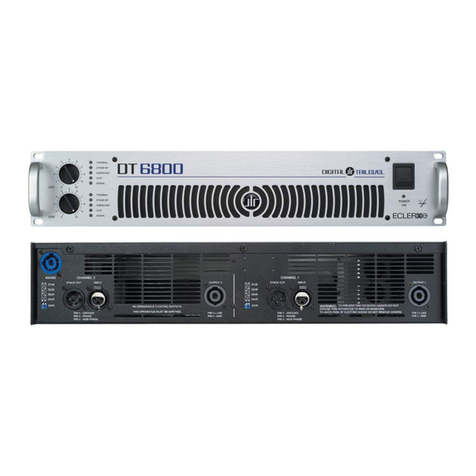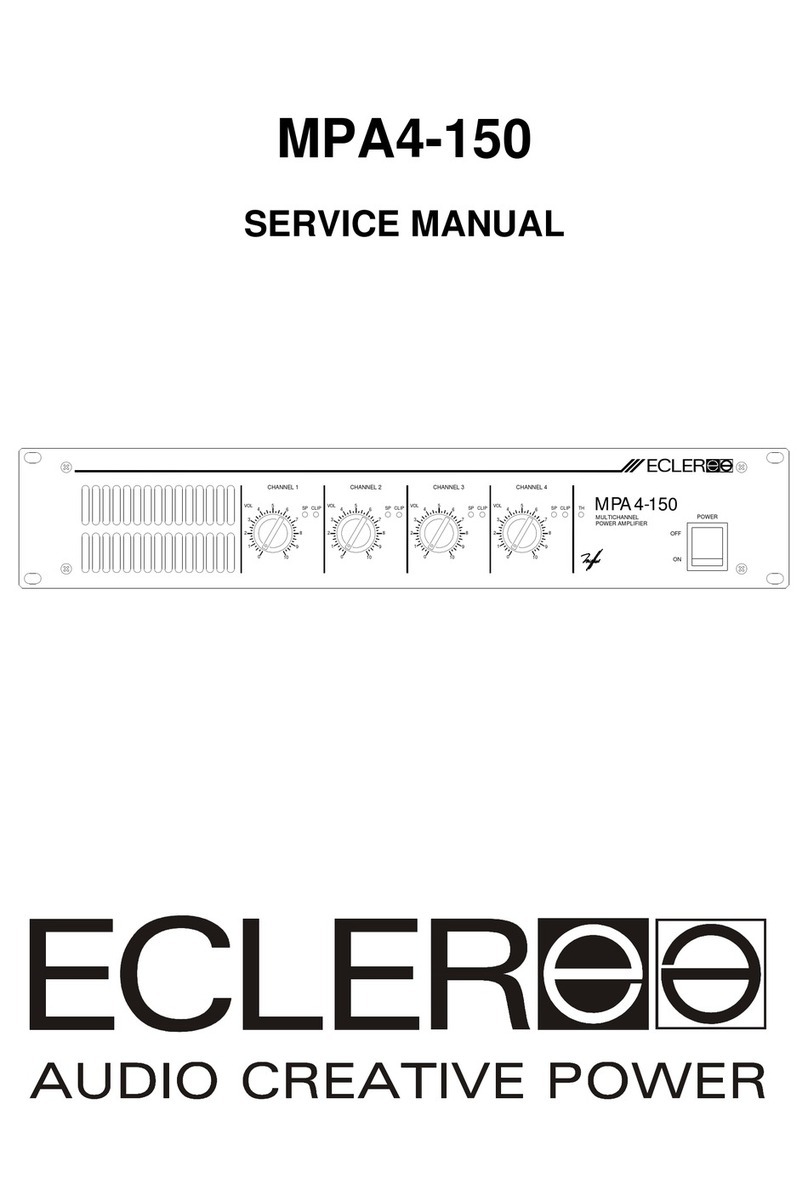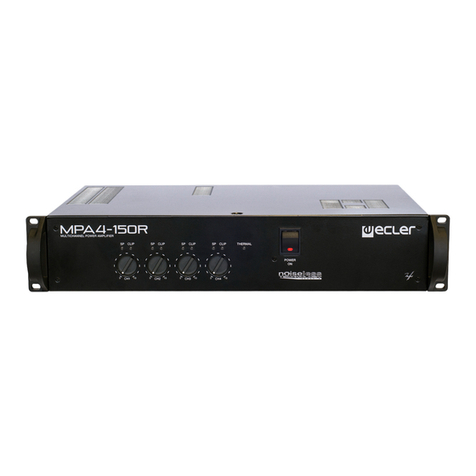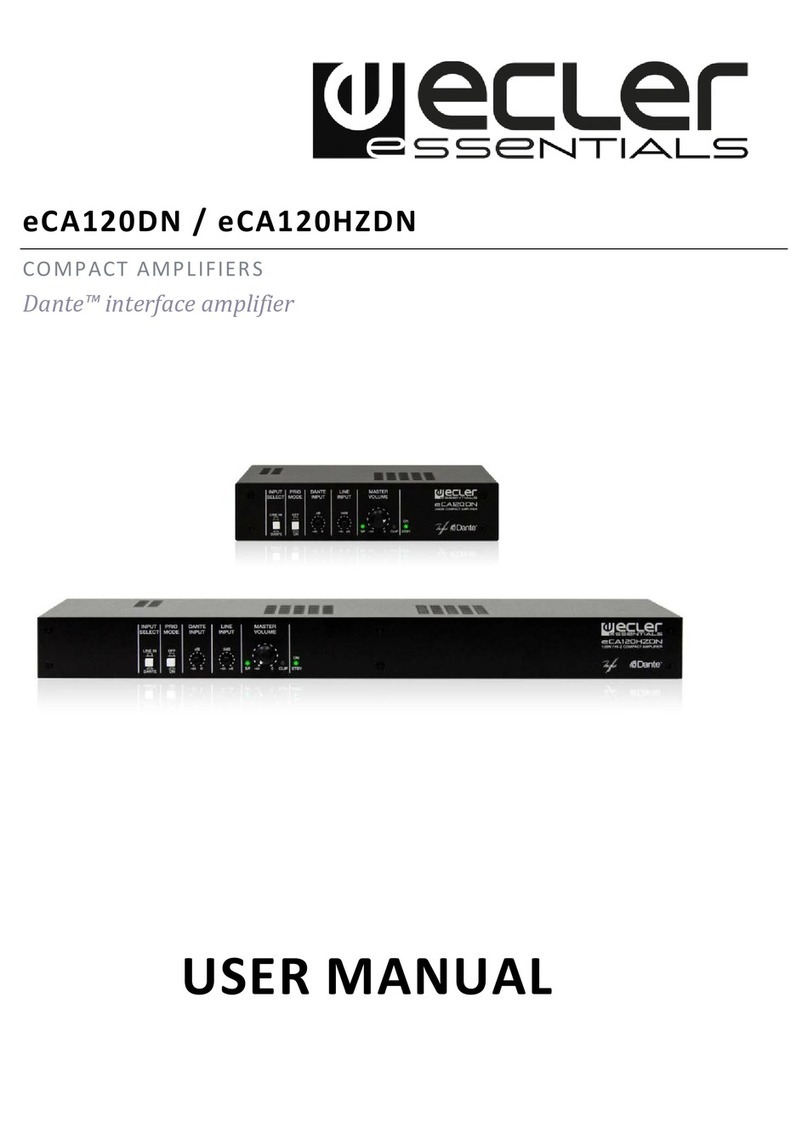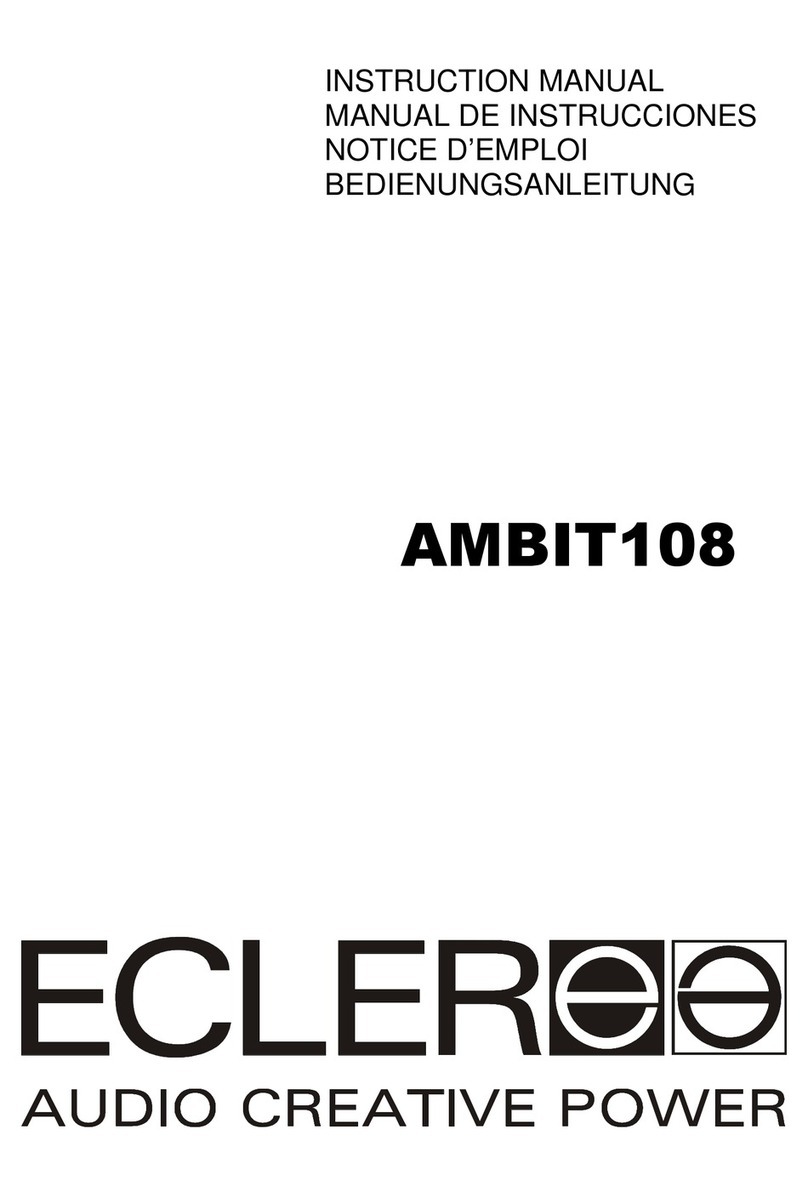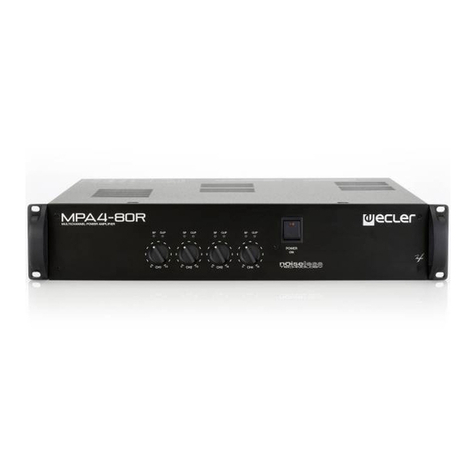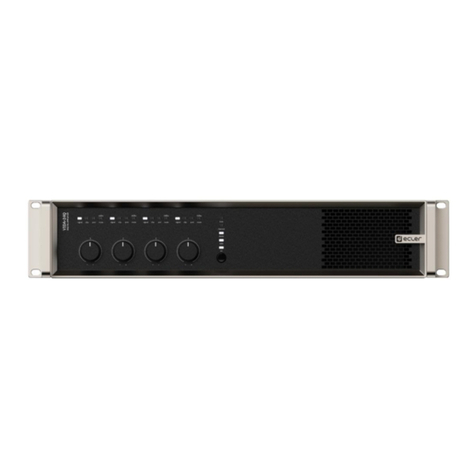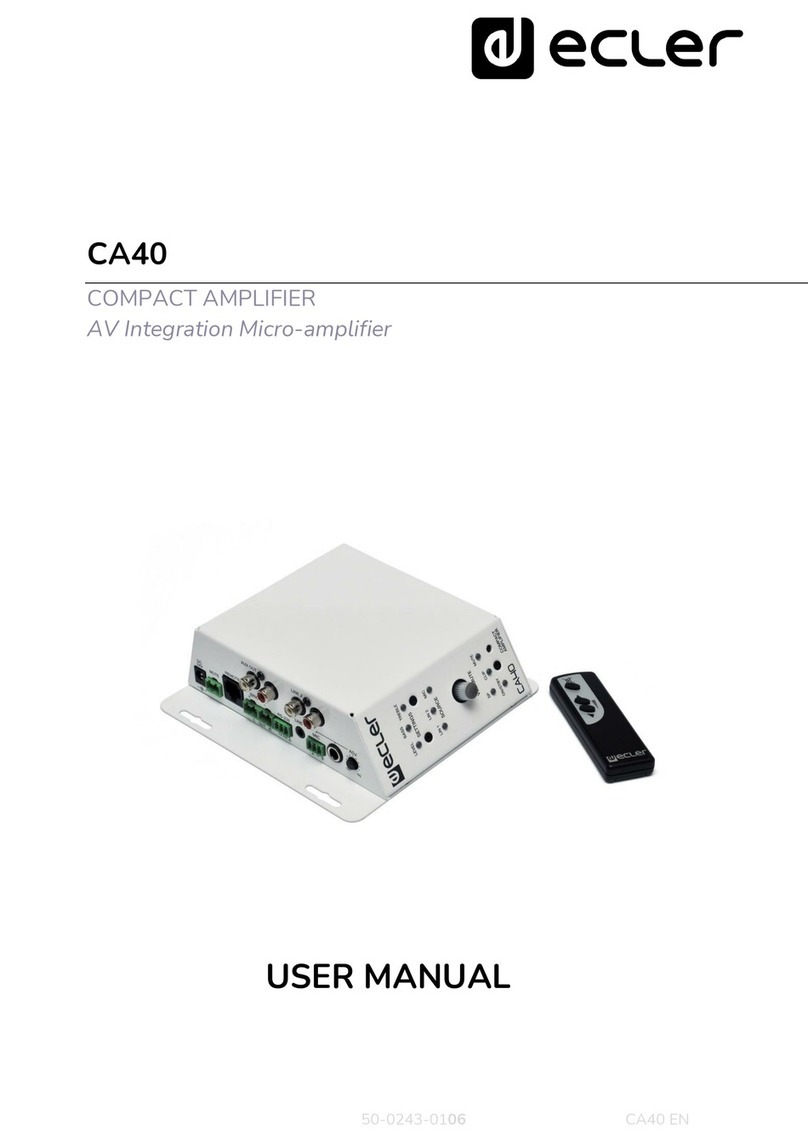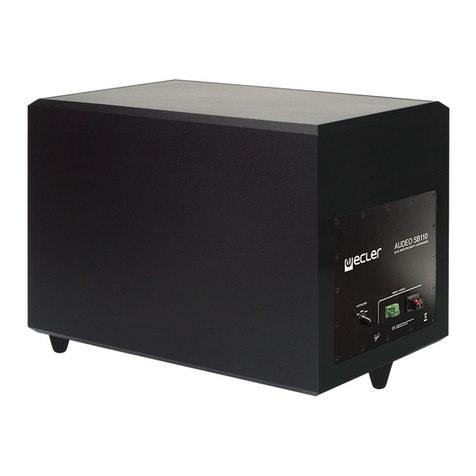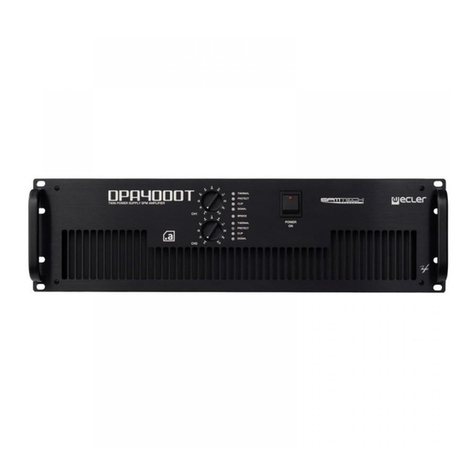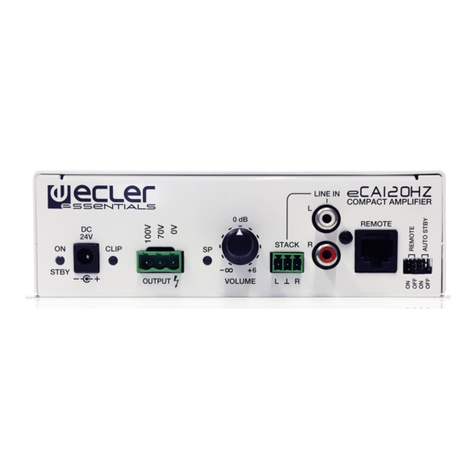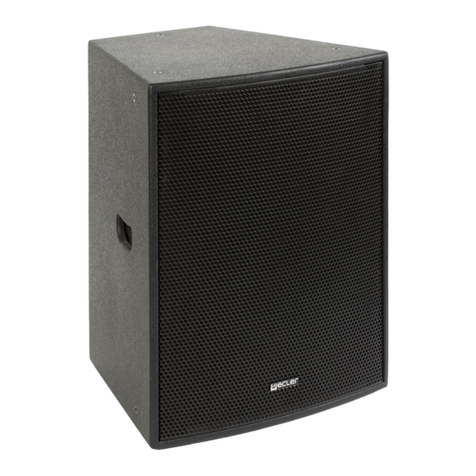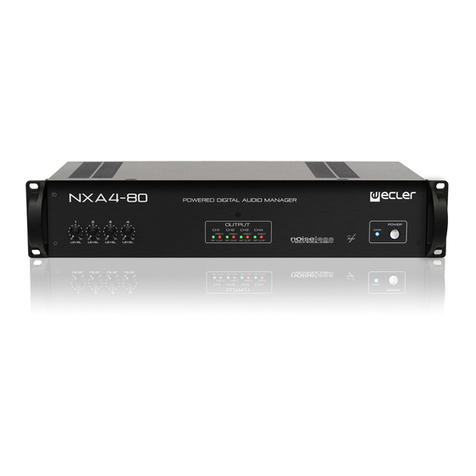6
LINE3/MIC signal attenuates to that of the LINE1 when it exceeds the activation
threshold
LINE2 + LINE3/MIC: the LINE2 and LINE3/MIC inputs are mixed, amplified and
delivered to the L and R OUT outputs. If the TALKOVER function is active, the
LINE3/MIC signal attenuates to that of the LINE2 when it exceeds the activation
threshold
Select one of the 5 work modes in special selection mode with the rotating knob on the
front (see section 4.2. Special selection mode of active sources and adjusting settings for
details of the full procedure).
3.4. Audio output connections
The amplified output (OUT L and R) have Euroblock connectors.
The connection cable that connects the CA120 connectors and the speakers should be
good quality, with a suitable cross section and as short as possible.
The outputs can operate in stereo mode or mono (same signal L+R and both channels).
These are selected using the micro switches STEREO-MONO on the rear panel (see section 7.
DIAGRAM OF FUNCTIONS for more information).
Remember that the minimum work impedance for the amplifiers in mono or stereo mode is
4. For correct operation of the CA120, under no circumstances must you work with impedance
lower than specified above.
Additionally, the CA120 has an unamplified auxiliary output (AUX OUT) which makes it
possible to connect it to amplifiers or with other external devices. The auxiliary output AUX OUT has
a line level signal (0dBV) which is an unamplified replica of the signal delivered to the terminals
OUTPUT L y R.
3.5. Remote control options
REMOTE port: the RJ-45 REMOTE type connector allows the connection of a
WPmVOL or WPmVOL-SR (control 0-10 VDC) wall control panel to adjust the
general output volume and/or to select one of the five active work source modes
(LINE1, LINE2, LINE3/MIC, LINE1 + LINE3/MIC, LINE2 + LINE3/MIC). The
connection is made by a standard CAT5 cable between the WPmVOL or
WPmVOL-SR wall panel and the REMOTE CA120 connector.
Because there is a CA120 WPm type control as well as other types of control
(front knob, infrared control and serial port control) the most recent adjustments by
any of these methods will prevail. For example, if an active source is selected
and/or a volume adjustment is made using the WPmVOL-Sr wall panel connected
to the REMOTE port, and then these settings are adjusted using the front control,
the adjustment made with the frontal control will prevail. In this case, when the wall
panel position is adjusted again, the CA120 will change to the values indicated,
and so on and so forth.
MUTE port: The MUTE connector makes it possible to connect a power free
contact to totally silence the CA120 if an external device works on it (example: a
emergencies and centralised evacuation warning system).
RS-232 port: the serial communication port RS-232 allows remote management of
the CA120 from a computer through the EclerCOMM software or CA-NET protocol
from an external control system supporting this protocol. See the CA-NET protocol
manual for detailed information on the connection and syntax of the commands
supported. The connection has the following specifications:
